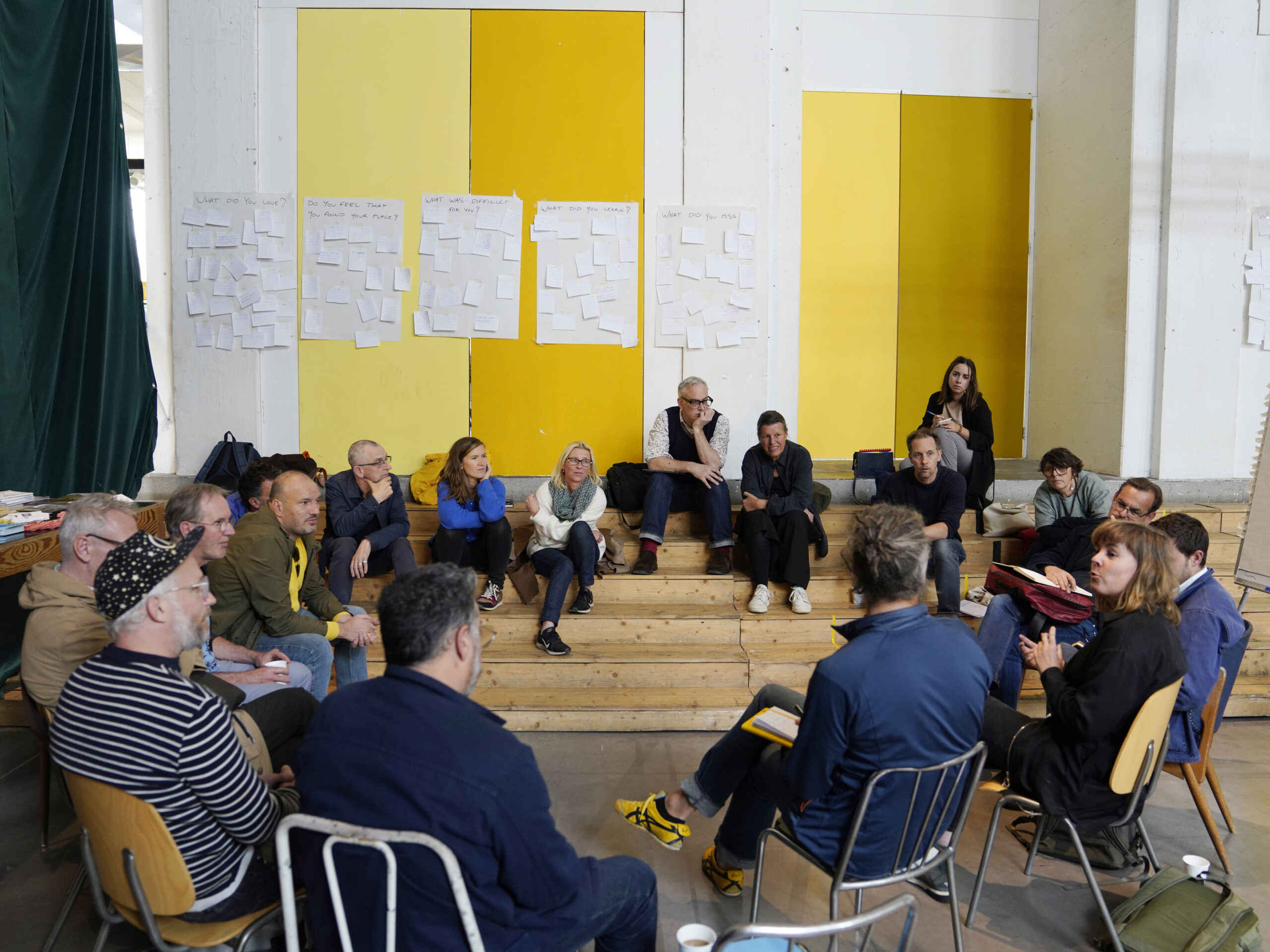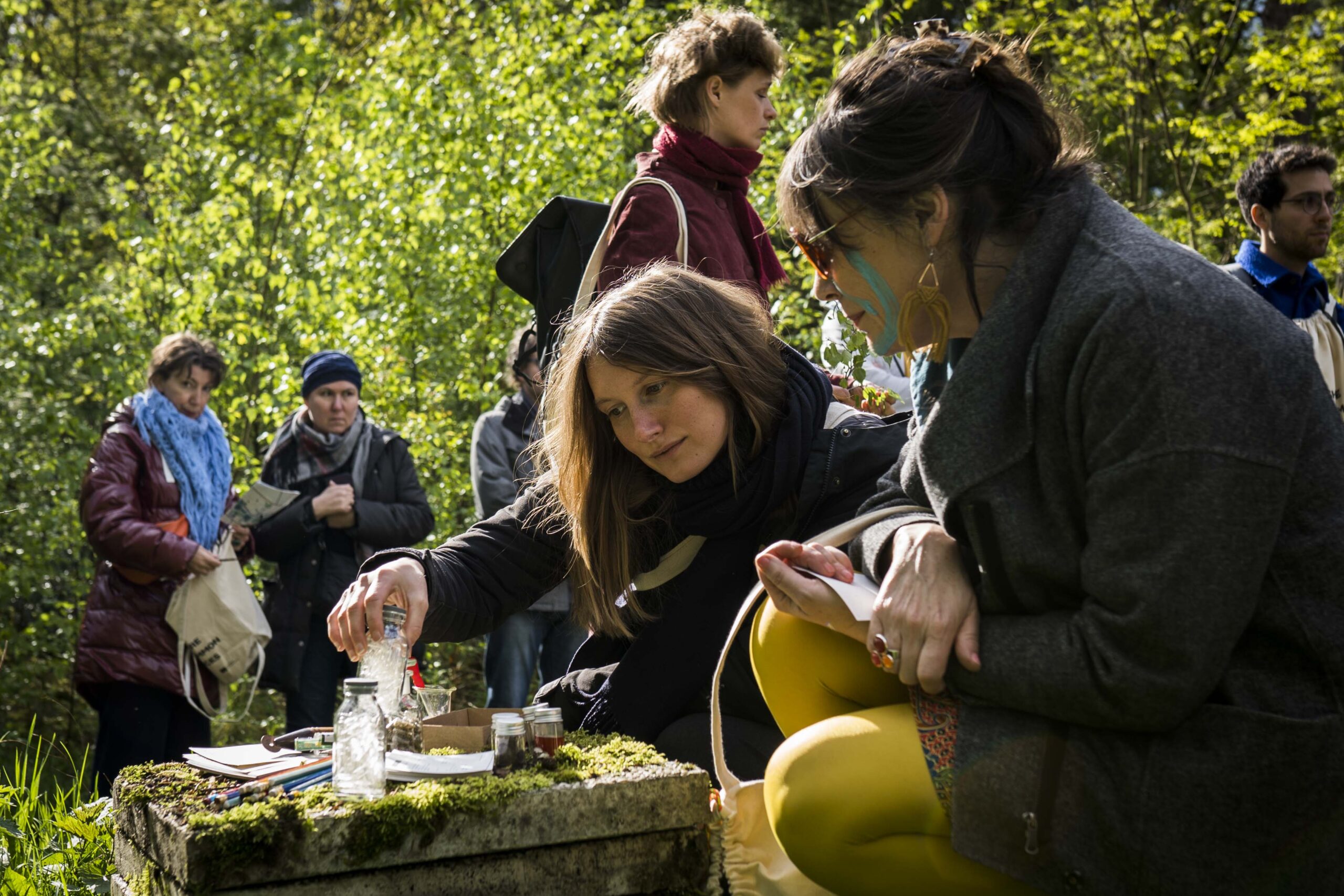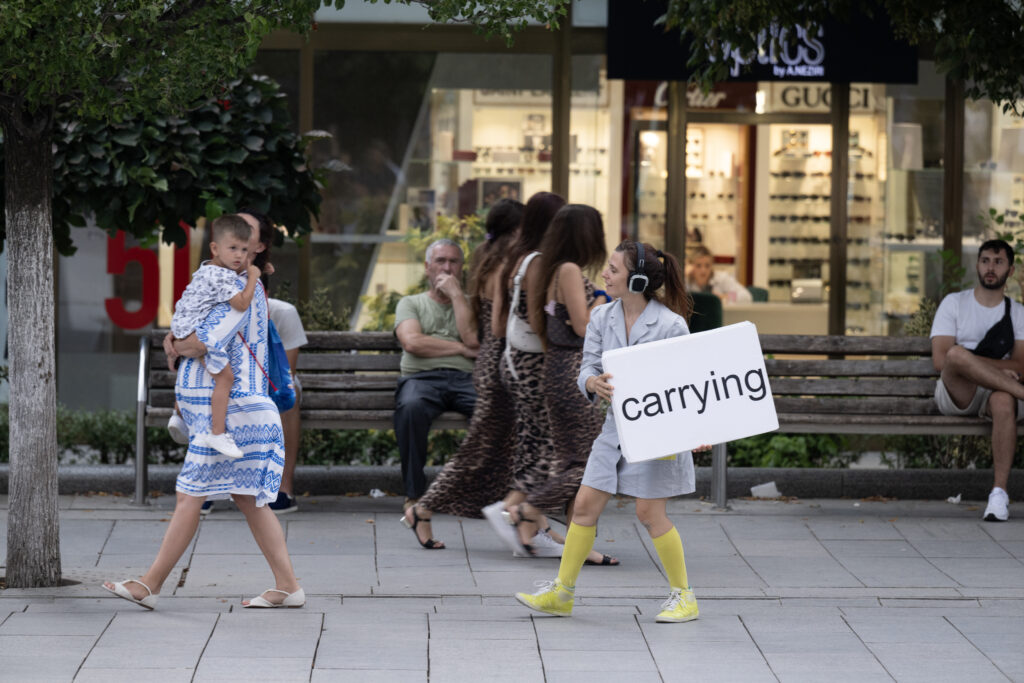This article was supported by IN SITU: By Lara Ewuraesi Bodger – Images provided by IN SITU
What Is Artistic Mobility
Artistic mobility, the movement of artists across borders to create, network, and collaborate is a crucial element of the global arts landscape. Mobility is intrinsically linked to artistic collaboration, as exposure to new cultures fosters creative exchanges and opportunities for artists to work together. Yet, as Marie Le Sourd, Secretary General of On The Move, a resource hub for cultural mobility notes:
“For some, mobility is a choice and a luxury; for others, it is an economic or political necessity. For many more it is not a realistic option, or can only be accessed at the invitation of a ‘western’ collaborator. Meanwhile, mobility is being reshaped by the twin pressures of environmental and political upheaval…”
These upheavals speak to the challenges artists face in accessing international mobility. However, another significant factor missing from the debate is the role that European cultural policy plays in addressing and shaping these issues.
The European Union’s Impact on Artistic Mobility
The European Union (EU) has taken a proactive stance in supporting artistic mobility, with the result that the continent’s cultural mobility is heavily shaped by its policies. With freedom of movement enshrined in the Maastricht Treaty, the EU is a major facilitator of the arts through its design. Initiatives such as the European Commission’s Creative Europe programme provide essential funding and resources to artists and access to cultural networks across the continent. Creative Europe not only offers grants but also fosters expertise, creates the opportunity for exchange, and builds logistical support through various projects and networks, helping to ease some of the barriers to mobility. The programme also extends its support to non-EU countries with ties to the institution such as Norway and Kosovo.
The EU also supports networks and projects that seek to level the playing field, such as IN SITU, the European platform dedicated to artistic creation in the public space.

This network plays a crucial role in connecting artists and programmers across Europe and includes artists from outside the EU, allowing them to collaborate despite the geographic, political, and economic barriers they may face. Such collaborations are central to the artistic practice of many European artists, including Eléctrico 28, a part of the IN SITU network, and a collective of artists from Austria and Catalonia that create work in public spaces across the continent. One of their projects, The Frame, is described as an “attempt to capture daily life passing by” and takes place on the streets of Europe, engaging pedestrians into co-creating the work with the artists. The ability to work across the borders of the EU is a fundamental and intrinsic part of the collective’s practice, as without such freedoms, their work would be significantly limited.
Kosovo: an EU potential accession candidate
Kosovo presents a unique case for artistic mobility within Europe, as a potential EU accession candidate, meaning that the country is currently working towards adopting EU laws and standards under a special process for Western Balkan nations. This has led to the recent relaxation of visa rules – as of the 1st of January 2024, Kosovo passport holders can travel to the EU for up to 90 days without a visa, a significant improvement for artists attending festivals across Europe. Yet as Florent Mehmeti from Oda Theatre in Pristina, Kosovo’s only independent theatre space and a member of the IN SITU network, points out, bureaucratic obstacles such as high bank transfer fees and work permit requirements still complicate collaboration with EU-based artists.
Kosovo’s political status poses another ongoing challenge, as some EU countries, including Spain, do not recognise its independence from Serbia. This refusal to recognise Kosovo as an independent country complicates collaborations between Kosovan and Spanish artists. The political parallels between Catalonia’s push for independence and Kosovo’s history is a connection that the Spanish government aims to avoid, making artistic collaboration and mobility between the two nations complex. The Catalan artists from Eléctrico 28 are currently invited to attend an arts festival in Kosovo, and anticipate potential complications entering the country, expecting “some adventures in the process at least” due to their passports. Eléctrico 28 also highlighted the struggles involved in navigating the post-Brexit landscape, where participating in UK festivals now requires securing appropriate visas and insurance, adding costs to their work in Britain.
Kosovo also faces less obvious obstacles within the European art scene, Mehmeti noted that: ”It’s also a problem of a small culture, basically being in the shadow of the bigger European cultures, languages, and markets”.
To counteract this, Oda Theatre has joined the Great Little European Network (GLEN), connecting Europe’s smallest countries (those with a population under 3 million). The network offers mentorship, training and support for countries to push their cultural offering. Described as ‘critical friendship’ by Mehmeti, GLEN pairs producers and artists from different countries to share knowledge and improve their practices.
Despite the hurdles, Mehmeti also emphasised the unique opportunities that come from being a non-EU country. Kosovo’s distinct culture, he notes, can actually make it more appealing for collaborations, adding “sometimes it is a positive aspect… you become more sexy in terms of collaborations and being able to host, and sometimes it’s cheaper to produce and create in Kosovo”.

Whilst Kosovo faces notable barriers in artistic mobility due to its political status, small cultural footprint and the overwhelming bureaucracy that comes with closer integration into the EU, the country also benefits from its unique position. With support from networks like IN SITU and GLEN, and by capitalising on its distinct cultural identity, Kosovo is taking up its rightful space in the European arts space.
The Post-Brexit Experience
For British artists, the decision to leave the supportive EU arts bubble has brought significant challenges. The United Kingdom (UK) is no longer eligible for Creative Europe Funding or other EU artistic initiatives. Seth Honnor, Director of production studio Kaleider, and an artist part of the IN SITU network highlighted the substantial financial implications that Brexit has meant for his work, costing £1000s more a year than before Britain left the EU. Kaleider also described the “bureaucracy loop” he faced attempting to transport the ice used in their performance The Arch across Europe for the performance to take place. Reflecting on Brexit, Honnor asserted:
“There is no positive opportunity for us in having left the EU – only additional cost, reduced opportunity and cultural embarrassment.”
Despite these hurdles, Honnor remains committed to working in Europe, as the British market alone cannot sustain his studio’s ambitions. He emphasised the importance of the IN SITU network for helping him to achieve this goal:
“IN SITU has really helped us to continue working in Europe… we will stay in the network for as long as possible”.

On what he would like to change in the current landscape, he calls for: “a better economic flow between the UK and Europe, better partnership of knowledge, and mobility not impaired by being outside of the EU. We’re more impaired than Norway and Switzerland. They have more developed structures (than the UK). Mobility is a key part to remove the friction.” Honnor’s remarks underscore the pressing need for improved access to Europe for UK artists, to continue the cultural exchange that has long characterised UK and mainland European relations.
What’s next?
So, what does the future of mobility and collaboration mean for European artists? This differs significantly based on the country and artist involved. For British and European artists wanting to pursue the opportunities that mobility presents, the future might be starting to look a bit brighter. The new UK government under the leadership of Keir Starmer has indicated that it seeks to strengthen ties to the EU. Whilst it’s too soon to say what the practical implications of this will be, it seems to signal a more supportive artistic environment than the previous Conservative government, which was well documented to have made significant cuts to the arts. Similarly, for Kosovo, closer ties to the EU mean potential improvements for its artists, with Kosovo recently becoming closer to becoming a member of the Council of Europe.
In April 2024, the EU also expressed a commitment to enhancing mobility between the UK and the EU by proposing a youth mobility scheme. This initiative, targeting individuals aged 18-30, would facilitate opportunities to study, work, and live across both regions. While the UK initially rejected the proposal, a revised version is now in development, making this promising news for young European artists hoping to access the opportunities those working in the pre-Brexit era had.

The EU has also stepped up efforts to assist those applying for funding in the creative and cultural sectors. To simplify the often complex application process, the European Commission has introduced an interactive guide aimed at easing bureaucratic hurdles for those applying for funding. This support is especially valuable for smaller organisations, like ODA Theatre, as applying for funding can be a time-consuming challenge.
One thing is clear, the support of the EU and cultural networks and projects such as IN SITU and GLEN are pivotal for helping artists overcome the challenges they face. Marie Le Sourd’s words run true, mobility is a luxury for some artists, yet the cultural impact of making mobility accessible across the continent should continue to be a priority for the sector, particularly amidst the political upheaval of our times.

